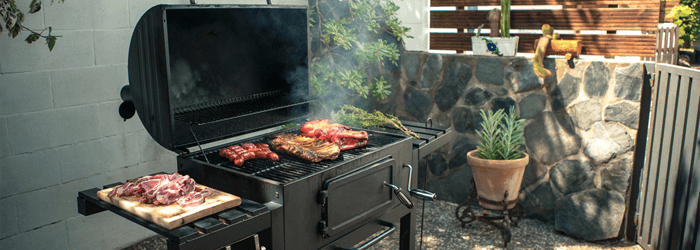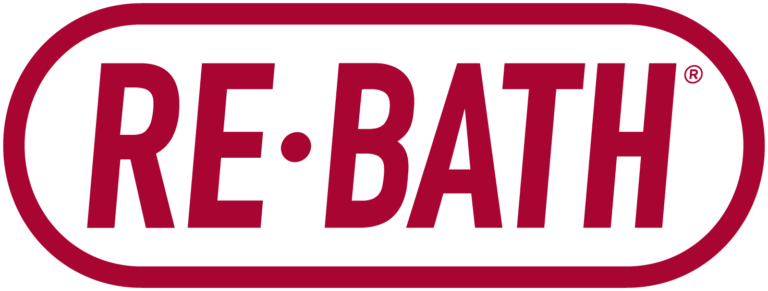Grill Care Is Key
Nothing brings people together quite like a good old fashion BBQ cookout. The time-tested, and reliable grill has been a staple of backyards not only in Arizona but across the country. Like any other appliance you may own, it does require care and maintenance not only to ensure its function but for your own safety as well. Whether you’re a year-round griller or lean towards seasonal cookouts, if you haven’t performed some TLC on your grill in quite some time, we recommend performing the following maintenance before firing it up.
There are a few simple tasks to complete before getting ready for your next BBQ.
1 | Inspection
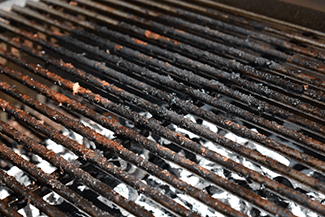
If you’ve stored your grill for a significant amount of time, you need to perform a thorough inspection of its interior. Insects will gladly set up shop within the interior. Spiderwebs can cause flare-ups when burned. If you have a gas grill, reconnect any lines you may have disconnected and spray with soapy water. Turn on the gas and look for visible bubbling on the gas line. If you see bubbles, the line is leaking and unsafe to use. Call the gas company.
2 | Cleaning
At a minimum, it is good practice to perform a thorough cleaning of your grill twice per grilling season. Basic cleaning can be done every few months if you grill weekly.
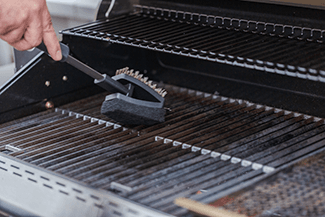 If you have a stainless-steel grill, consider getting a stainless-steel cleaner to keep it looking new. Scouring sponges, rubber gloves, and rags will be a must-have for performing cosmetic maintenance. Because of our climate, it is recommended to wait for a cool, overcast day before cleaning. Intense sunlight can increase the difficulty of removing streaks from the surface.
If you have a stainless-steel grill, consider getting a stainless-steel cleaner to keep it looking new. Scouring sponges, rubber gloves, and rags will be a must-have for performing cosmetic maintenance. Because of our climate, it is recommended to wait for a cool, overcast day before cleaning. Intense sunlight can increase the difficulty of removing streaks from the surface.
While certain grilling techniques result in those wonderful char markings and flavorings, they also leave carbon deposits on nearly every surface of your grill. Not only will excessive carbon buildup cause your grill to heat up unevenly, but it can also lower your max operating temperature and cause burner tubes to fail earlier than they should. Grease and sugars can also adhere to the carbon supplying a conducive environment for bacteria growth.
Grill Grates
The grill grates are arguably the easiest item on your grill to maintain, as you can use the grill itself to aid in cleaning the grates. Weber Grills recommends allowing the grill to heat for 15 minutes before using a wire brush on the grate. This will allow any stuck-on food and debris to turn to ash and thus, making it easier to clean.
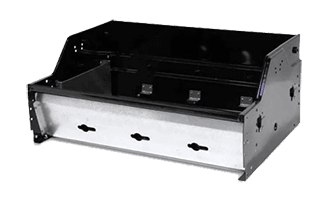
Firebox
The firebox is perhaps the most vital part of your grill. It is where the air and fuel mixture is burned supplying the heat to cook your food. The interior is prone to soot and grime build-up and must be periodically cleaned. Use a wire cup brush with an angle grinder to remove burnt-on debris. Follow that up with a thorough wipe-down with vinegar, and it’ll be ready to go.
Venturi Tubes
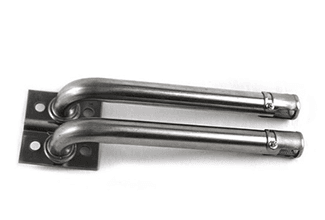 Take a look at the venturi tubes where the fuel and air are mixed together, they need to be clear to work properly. A Venturi tube measures the speed of a fluid or measure the pressure difference of a fluid. Venturi tube is also often flow nozzles and flow tubes. It will require the removal of both the burner and tube assembly. Clean the tubes with soapy water and a wire brush. Once clean, confirm the venturi tube is properly lined up with the gas valve before reattaching.
Take a look at the venturi tubes where the fuel and air are mixed together, they need to be clear to work properly. A Venturi tube measures the speed of a fluid or measure the pressure difference of a fluid. Venturi tube is also often flow nozzles and flow tubes. It will require the removal of both the burner and tube assembly. Clean the tubes with soapy water and a wire brush. Once clean, confirm the venturi tube is properly lined up with the gas valve before reattaching.
Burner Covers
Burner covers also called heat tents, must be cleaned and free of debris to not obstruct the flame itself.
Lids
Porcelain-coated lids should be treated similarly to glass. Clean with mild soap and water, before drying with microfiber rags or paper towels. Similar to porcelain, powder-coated lids should be cleaned with mild soap before drying with a microfiber rag and/or paper towels. Painted lids that have faded can be refinished with high-temperature paint. Prior to painting, use sandpaper or similar abrasive material to scrub away corrosion followed by an aggressive wash with soap and water. Once the lid has been prepped and is ready for paint, refer to the manufacturer’s guidelines on the application of paint.
3 | Check the Ignition
A clean firebox and proper fuel-air mixture will be useless without a functioning ignition system. Perform a test ignition and confirm the proper function by the presence of a spark. Ensure the pressure regulator connections on the propane tank are tightly secured. If you find that you’re only able to ignite manually, it’s worth checking if the ignition batteries still have some juice in them. Other than the options listed above, if the ignition still won’t occur, you can clean and replace the electrodes for the ignition itself. The grill’s owner’s manual should have a section on how to do this.
4 | Get Your Grill On
After all the cleaning and maintenance have been completed, it’s time to get grilling! Check out some of our favorite recipes, Award Winning BBQ Salmon and Rosie’s Signature Steak. Rosie also has five simple suggestions on how to spice up your next backyard cookout that can be found here.
Home Maintenance To-Do | #GrillCare
###
PODCAST
If you haven’t fired up the grill in a long time or use it on a regular basis, we recommend some maintenance tips to keep grilling all year long. Senator Sina Kerr talks about preservation ideas for agriculture under the water supply bill. Plus homeowner questions on supercooling, replacing grass for landscaping, kitchen remodeling, batt insulation, killing those sticker weeds and more!
Podcast Archive With Expanded Content and Resources
PHOTO CREDIT
- BBQgrills.com
- Sears
- Shutterstock
CONTENT RESOURCES

